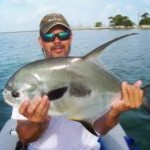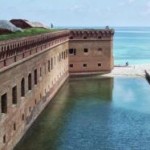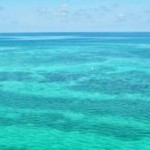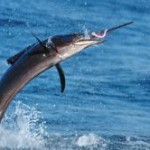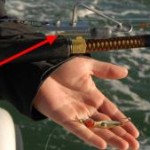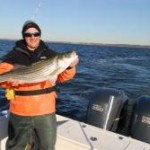from The Fishing Wire
The Dry Tortugas Ferry out of Key West makes it easy to access Dry Tortugas National Park, and you can bring your kayak with you.
A few weeks ago, I had an opportunity to spend four days and three nights on Garden Key in Dry Tortugas National Park; the experience was one that I will never forget. Sneaking up on a tailing 15-pound permit in 12 inches of water, presenting a live crab to it, and having the fish scream off a hundred yards of 20-pound braid on the first run will make your heart pump like just about nothing else!
The Dry Tortugas, a series of very small islands and submerged coral reefs about 70 miles west of Key West, has a rich history and offers some of the most exceptional and exciting fishing opportunities in Florida. While you are there enjoying saltwater fishing, you will also see an array of marine and terrestrial wildlife and have an opportunity to tour historic Fort Jefferson.
Warning! This is not a posh resort. With the exception of the visitor’s center and museum, which are accessible only during the day, Garden Key has no fresh water and no electricity. So if you require air conditioning, hot tubs, cable television, fine restaurants and all the luxuries of home, you might want to consider a day trip instead.
Getting out there
Permit and bonefish are abundant on the clear, shallow flats. Live crabs are top bait for the permit.If you happen to own a sweet, 36-foot offshore boat with triple motors or something comparable, just load up all your fishing and camping gear, fuel up and bust out there. More than likely, your options include a high-speed catamaran, called the Yankee Freedom, that makes one trip per day, a commercial float plane that makes multiple trips per day, depending on demand, or a chartered vessel.
My old, 17-foot Whaler with a 12-gallon tank seemed a little inadequate for the trip, so I opted to take the Yankee Freedom, which arrives at Garden Key at 10:30 a.m. each day and departs for the return trip to Key West at by 2:45 p.m. The ferry holds approximately 150 passengers and makes the trip out there in a little over two hours. The boat is very comfortable, and breakfast and lunch are provided at no additional cost.
If you simply want to do some snorkeling, view the wildlife and tour the fort, a 4.5-hour stay is all you need to have a great day of sightseeing. The ferry has room for only four hard-sided kayaks per trip, so if you intend to camp and fish, reserve space for yourself and your kayak well in advance.
Camping
If you can handle a few days without all the comforts of home and want to enjoy some truly amazing fishing, try camping. At $3 per day per person, camping is very inexpensive, but spaces are limited and on a first-come, first-served basis. Each camping space includes a grill and a picnic table, and your normal camp ground rules apply in terms of quiet hours and keeping things clean. Very nice, waterless restroom facilities are available right next to the camp sites.
Fishing
The old fort is worth a visit in itself, but the fishing and diving are the true stars for outdoors families.For starters, the park boundaries encompass around 100 square miles of open water, but only half of the area is open to fishing and anchoring. The rest of the waters of the park make up the Research Natural Area (RNA), designed to provide protection for important shallow-water habitats. Garden Key and Fort Jefferson are within the RNA; however, a 2-mile-diameter fishing area is established around Garden Key. Within that circle, fishing is allowed except in the swimming/snorkeling area adjacent to the fort and within a couple of small coral and nurse shark protection areas. Park rangers will provide information and maps to help you stay within the boundaries.
If you are fishing by kayak (and I would suggest using one), you will be limited to the 2-mile-diameter circle around the fort, as the larger portions of the park (outside the RNA) are too far to reach by kayak. But don’t be alarmed. Within that relatively small fishing area you can catch a huge variety of species.
In the morning or late afternoon, especially during a low tide, scan the flats and you will likely see schools of bonefish cruising in 6 to 10 inches of water in search of crabs. With a little luck you will also see a solitary permit tailing as it digs crabs out of the coral rubble. To catch the bonefish and permit, you need to get pretty close and present your bait quietly to avoid spooking the fish. This can be done from the kayak or by wading, but the key is to keep quiet, cast beyond the fish and drag your bait back to the fish and then let it sink.
The clear water here makes sight fishing easy during the day, and tarpon come cruising the channels after dark.During the day, the shallow coral reefs in 6 to 25 feet of water are covered with yellowtail snapper, mutton snapper, red grouper, scamp, graysby and various wrasses. You can also move out into the deeper reef areas and catch larger snapper and grouper, but on medium/heavy spinning tackle, the 6- to 9-pound muttons were about all I could handle from a kayak. A variety of pelagics, including yellow jacks, rainbow runners, blackfin tuna and cero mackerel, also move through the area in search of baitfish and squid.
At night, bigger game are afoot. Tarpon in the 80- to 200-pound range are just about everywhere you look and relatively easy to hook up with live bait, dead bait or by trolling diving lures. Huge sharks also cruise around in the boat basin at night and can be hooked directly from the ferry dock. You may also see one of the resident goliath grouper hanging around the dock’s fish-cleaning areas, looking for scraps. I don’t know where else you can do all that in a kayak!
If wildlife viewing is more your thing there is also an 8-foot saltwater crocodile that sometimes visits the moat during the day and several species of shorebirds that nest each summer on Bush Key.
Fishing regulations
The 2-mile-wide fishing bubble around the fort is within state waters of the Gulf of Mexico, so the fishing regulations are pretty simple. Just follow the regulations that apply to state waters of the Gulf and stay within the boundary line.
If you access the Tortugas by private or charter vessel and have the opportunity to fish outside the RNA, things become more tricky, because you have to know the Gulf-Atlantic boundary line as well as the state and federal boundary lines for the Gulf and Atlantic. You will also need to remember that grouper regulations in all state waters off Monroe County follow the regulations for state waters of the Atlantic in terms of seasons, size limits, bag limits and gear requirements.
If you need maps showing the Atlantic-Gulf boundary line, the Dry Tortugas National Park boundary line, or the state waters boundary line around the Dry Tortugas, please send me an email and I will be happy to help you access the maps.
So make your plans for a fishing adventure of a lifetime at the Dry Tortugas, and don’t forget to record all of your catches on the iAngler phone app or at snookfoundation.org. Share your photos, video and fishing tales with us as well by emailing them to Alan.Peirce@MyFWC.com.
Gone Coastal is one of many ways that the Florida Fish and Wildlife Conservation Commission (FWC) Division of Marine Fisheries Management is helping recreational anglers understand complex saltwater regulations and learn more about saltwater fishing opportunities and issues in Florida. We are also available to answer questions by phone or email anytime, and we would love the opportunity to share information through in-person presentations with recreational or commercial fishing organizations. To contact the FWC’s Regulatory Outreach subsection call 850-487-0554 or email Alan.Peirce@MyFWC.com.

